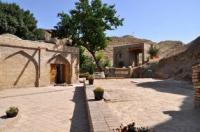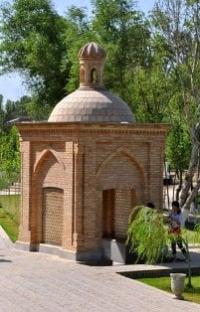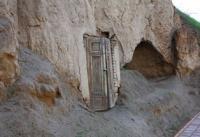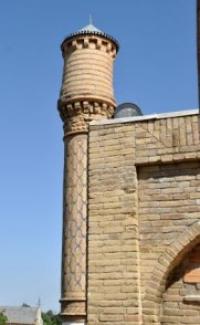You are here
History Saint Daniyar.




Travel packages in Uzbekistan.
"Khoja Daniyor's Mazar (shrine) is beyond the city boundaries, down along the northern wall of Afrasiab, the ancient settlement. Just below the Mausoleum flow the waters of the river Siab. Commoners call this grave the grave of the Prophet Daniyor, but his real grave is actually in Mosul. It is said that this is the grave of an associate of Kusam ibn Abbas, a cousin of the Prophet Mohammed. May Allah be gracious to him! It is said that Khoja Daniyor was very pious. Next to the Mazar, by the river, a covered spring produces wonderful tasty water; May Allah be gracious to him!"
Abu Takhir Khodja Samarkandi.
Sacral monument of Uzbekistan.
One of the most well known sites of worship in Samarkand is the Mausoleum of Saint Daniyar. Followers of the Islamic faith, Christians, the Jewish treat this place with equal respect. Daniyar, Daniyar, Daniyar are the names of one and the same Saint in the Islamic, Christian, and Jewish literature Abu Takhir Khodja Samarkandi, the XVIII century historian from the legendary city of the same name noted in his work "Samaria": "Khoja Daniyor's Mazar (shrine) is beyond the city boundaries, down along the northern wall of Afrasiab, the ancient settlement.
Just below the Mausoleum flow the waters of the river Siab. Commoners call this grave the grave of the Prophet Daniyor, but his real grave is actually in Mosul. It is said that this is the grave of an associate of Kusam ibn Abbas, a cousin of the Prophet Mohammed.
May Allah be gracious to him! It is said that Khoja Daniyor was very pious. Next to the Mazar, by the river, a covered spring produces wonderful tasty water; May Allah be gracious to him!"
So who indeed was this person called the Prophet Daniel? According to the biblical interpretation, 'Daniel' in Hebrew means 'the judge is God', or 'the God is my judge'. Daniel was born in Jerusalem in 603 B.C. and was a descendant of David and Solomon, the kings.
When Israel was conquered by Nebuchadnezzar, king of Babylonia, in 586 B.C. Daniel was brought to Babylon together with other young men of noble descendance to study with the premier scientists of their era also in the fields of astrology and the art of dream interpretation.
It appeared that the most capable of the Jewish youth was Daniel. Besides, he proved himself adamant about religious beliefs. He even gave up drinking vine and eating meat, having obtained permission to eat only vegetables in order to observe his religious rules. Therefore, Daniyar wisdom is treated in the Bible as God's reward for devotion.
For Daniyar wise interpretation of a dream Nebuchadnezzar reveiled to him, the king declared Daniyar his closest confidant. In his declining years, Daniyar asked the king to let him go into retirement.
He moved to Susa (present-day Shush in Iran), where he ultimately died and was buried in the royal burial-vault. It is believed that the spirit of the prophet keeps the town safe from all misfortunes and misery, and that Daniyar remains bring prosperity.
According to legend, Amir Timur, during his seven-year campaign in Asia Minor (1397 - 1404), made a pilgrimage to the Saint's mausoleum where he decided to equally assure prosperity for his capital, Samarkand, by bringing part of the Saint Danyar remains back home.
As the caravan approached Samarkand, on the last rest stop it was decided to committ the remains to the earth on the very spot by the river Siab, that resembled the shrine in Susa and that still can be visited today.
Only thereafter did the spring well up, the waters of which pilgrims have been collecting and drinking for its healing power ever since. The six domed mausoleum, of which five sustained, was built at the beginning of XX century by the guilde of the Samarkand soap makers, the head of whom was Makhmum-Aksakal.
However, an etching of the mid IXX century and photos of the late IXX century, reveal that originally the grave was covered with a flat river stone and that sacred poles, tugs, once marked the head of the grave.
The domes of the mausoleum are nestled in the main branches of a pistachio-tree that is more than 500 years old. When Alexiy II, Patriarch of Moscow and all of Russia, came to Samarkand in 1996 to bless Danyor's Mausoleum, the half withered tree began to blossom.
As you step inside the Mausoleum (without your shoes please) you may follow the other pilgrims in circumnambulating the 18m sarcophagus. In 2001, extensive archaeological excavations unearthed a XIV century mosque. More historical facts are revealed as the archaeological works continue.
Authority:
http://www.discovery-central-asia.com
Photos by
Alexander Pterov.







